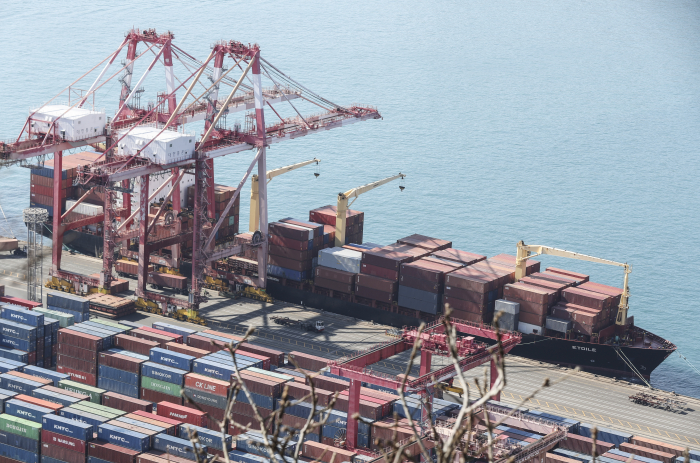S. Korea's economic growth jumps to 11-year high
The 4% rise is thanks to a pickup in consumption, strong exports and base effect
By Jan 25, 2022 (Gmt+09:00)
LG Chem to sell water filter business to Glenwood PE for $692 million


KT&G eyes overseas M&A after rejecting activist fund's offer


Kyobo Life poised to buy Japan’s SBI Group-owned savings bank


StockX in merger talks with Naver’s online reseller Kream


Meritz backs half of ex-manager’s $210 mn hedge fund



South Korea recorded 4% economic growth in 2021 – its highest jump in 11 years – according to the country’s central bank.
The steep rise was supported by a pickup in consumption and firm export demand. Base effect also played a role as the previous year’s economy was hit hard by COVID-19.
The South Korean economy grew 2.2% in 2019 but contracted 0.9% the following year. The slump was the first contraction since 1998 when the economy contracted 5.1%.
UNWAVERING SPENDING
A pickup in consumption and record exports led the upward trend.
Domestic consumption, which accounts for nearly half of Korea’s GDP, increased 3.6% last year. Not only did private spending rebound by a big margin from the 5% contraction the year before; the jump was the highest such figure since 2010's growth of 4.4%.
With the continued emergence of new COVID-19 variants, different social distancing measures were adopted throughout 2021. The measures did not dampen consumer sentiment in a tangible way as consumers and businesses alike learned to live with the shifting policies. For instance, establishments that initially suffered from the stay-at-home measures turned to providing their goods and services online.
Household spending at restaurants and cafes also rose significantly from the year previous.
ROBUST EXPORTS
Strong exports have also supported the economic recovery. Exports in 2021 escalated 9.7%, in sharp contrast to a 1.8% slowdown in 2020. The jump was the highest since 2011 when the figure stood at 15.4%.
The resumption of operations at factories worldwide also boosted the exports of equipment and machinery made in Korea.
Corporate investment continued the surge from the year earlier.
Facilities investment rose 8.3%, the highest jump since 2017; continuing from the 7.1% increase in 2020.
Construction investment in apartments, factories, warehouses, and bridges decreased 1.5%, extending the downturn from the 0.4% contraction seen the year before.
Capital expenditures declined significantly, hit by rising prices of raw materials, including steel bars.
By industry, the manufacturing sector – the backbone of the Korean economy – increased 6.6%. That is a sharp turnaround from the year prior’s contraction of 0.9% and the highest such rate since 2010 when the figure stood at 13.6%. The recovery in the manufacturing sector came on the back of renewed demand for exports and strong capital investment.
The service industry also rose 3.7%.
Construction, for its part, continued the downward trend from the year prior and contracted 2.2%.
Thanks to the economic expansion, last year’s per capita gross national income (GNI), or the total amount of money earned by a nation’s people and businesses divided by its midyear population, hit a record high of $35,000.
Write to Ik-Hwan Kim at lovepen@hankyung.com
Jee Abbey Lee edited this article.
-
 Shipping & ShipbuildingHanwha Ocean shares sink after KDB's sale of 4.2% stake
Shipping & ShipbuildingHanwha Ocean shares sink after KDB's sale of 4.2% stakeApr 29, 2025 (Gmt+09:00)
-
 EnergySouth Korea nears Czech nuclear deal; Doosan, related stocks fly high
EnergySouth Korea nears Czech nuclear deal; Doosan, related stocks fly highApr 25, 2025 (Gmt+09:00)
-

-
 Business & PoliticsSeoul, Washington agree on July tariff deal framework in '2+2' trade talks
Business & PoliticsSeoul, Washington agree on July tariff deal framework in '2+2' trade talksApr 25, 2025 (Gmt+09:00)
-



